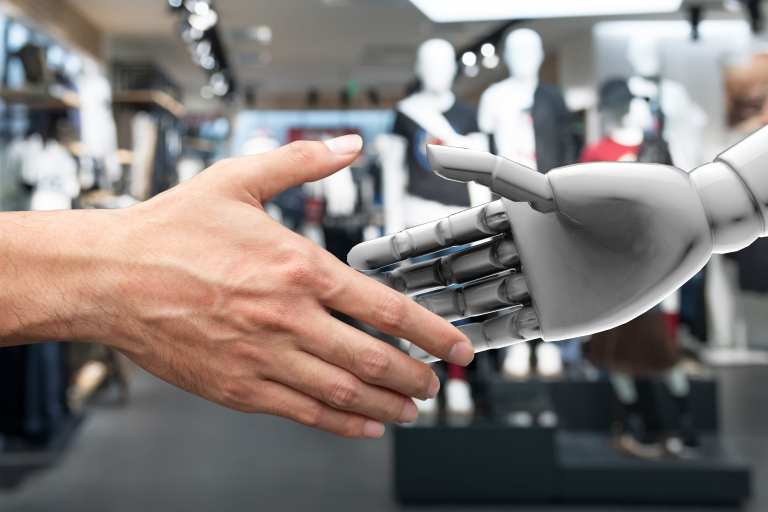Early Days: AI Shows Promise And Limitations For Retailers

This is easy. Hire a data scientist. Or reassign the ones you have. Give said scientist(s) a budget to lease a Tensor Flo server with Google and start parsing transaction data. Use data to build an algorithm. Start creating more customer data to feed the algorithm and then you too can join the artificial intelligence (AI) retail revolution.
Not so fast. At one level it’s just that easy. Retailers can engage with an “AI lite” strategy that produces lookalike customer data and a level of predictive analytics. But the present and future of AI in retail is much richer. The smart retailing play with AI is to be patient and understand that these are early days for AI, especially with retail.
“AI simply hasn’t been around long enough, nor has it been adopted by enough companies, for us to determine all the ways it will ultimately drive value,” said Michael Scharff, CEO of Evolv Technologies, which provides retailers with AI expertise. “That’s not to say AI won’t play a significant role, especially as it continues to advance.”
Before describing that role, a little background. Artificial intelligence at its most basic level provides steroids for retail data. Suppose a regional fashion retailer with an eCommerce presence has 100,000 customers in its data base. And suppose those records are fairly basic: most recent transactions, average purchase per visit, demographic information and website traffic history. Now suppose those records are supplemented by a third-party anonymized database. AI will take that data and match it to an algorithm that then allows all the data to be supplemented by data within the category or for competitive purchases. The data base is now showing predictive purchase patterns, life events and even lookalike customer segments. In and of itself, AI is invaluable for that alone.
“Companies need to start by defining which activity is and isn’t useful to automate, often based on customer needs and psychology,” said Scharff. “A food delivery app, for example, probably should use a customer’s location and previous restaurant transaction data to serve up food recommendations, but it doesn’t make sense for that app to automatically reorder food just because it’s been a week since the last order. Most consumers would find that creepy and not at all useful.”
That’s not to say retailers can’t hit the ground running with some AI applications. In fact, one of the underrated and urgent applications of AI is in fighting fraudulent transactions. Perhaps the most important thing for retail executives to understand outside of the “early days” perspective is that AI is going to morph from an engineering-only property to marketing and from a big-scale retailers to small and medium-sized businesses (SMBs).
In a broad sense, with technical computer skills being more integrated into standard education curriculums, engineers will no longer be the gatekeepers for technical solutions to problems faced in the retail industry. Improved data literacy will integrate machine learning (ML) and AI solutions through businesses and retail will be no exception, said Dom Oliver, data scientist for AI retail consultancy EDITED. “In turn, current capabilities are cheaper, where improved performance has become accessible to more retailers. Increased speed allows more data-driven decision making at every level, better processing powers allow greater amounts of data to be incorporated into models, as well as more advanced models to be developed,” Oliver said.
The scale in AI is about the data, not the retailer, according to Oliver. SMBs can still have access to the same big data sets that their larger competitors have. In fact, because SMBs will likely have less internal data to reference and learn from, there’s a case to say that they have the most to gain from AI tech. Being able to learn from data around the world is a massive opportunity for SMBs that would not have been available 10 or 15 years ago. This will mean smarter buying from both a customer and a supply chain perspective which will be more cost-efficient and result in less waste. On the selling side, enhanced methods of customer profiling alongside increasing amounts of available customer data could revolutionize the marketing and selling processes for retailers, especially online.
Maybe the future of AI and retail is shared between algorithms and humans. Example: There was a recent TED talk in which Boston Consulting Group’s Sylvain Duranton took on the task of mixing human and AI decisioning to free companies from what he called the “algocracy” of AI dominance. BCG was engaged by a fashion retailer to see if AI could do a better job than its buyers in terms of predicting trends and selecting inventory.
Round one: AI wins. It reduced forecasting errors by 25 percent. In a second test human buyers were reviewing quantities suggested by AI and could correct them if needed. Result? Humans using AI … lose. Seventy-five percent of the corrections made by a human were reducing accuracy.
“Was it time to get rid of human buyers?” Duranton asked. “No. It was time to recreate a model where humans would not try to guess when AI is wrong, but where AI would take real input from human buyers. We fully rebuilt the model and went away from our initial interface, which was, more or less, ‘Hey, human! This is what I forecast, correct whatever you want,’ and moved to a much richer one, more like, ‘Hey, humans! I don’t know the trends for next year. Could you share with me your top creative bets?’ ‘Hey, humans! Could you help me quantify those few big items? I cannot find any good comparables in the past for them.’ Result? ‘Human plus AI’ wins, reducing forecast errors by 50 percent. It took one year to finalize the tool. Long, costly and difficult. But profits and benefits were in excess of $100 million in savings per year for that retailer.”